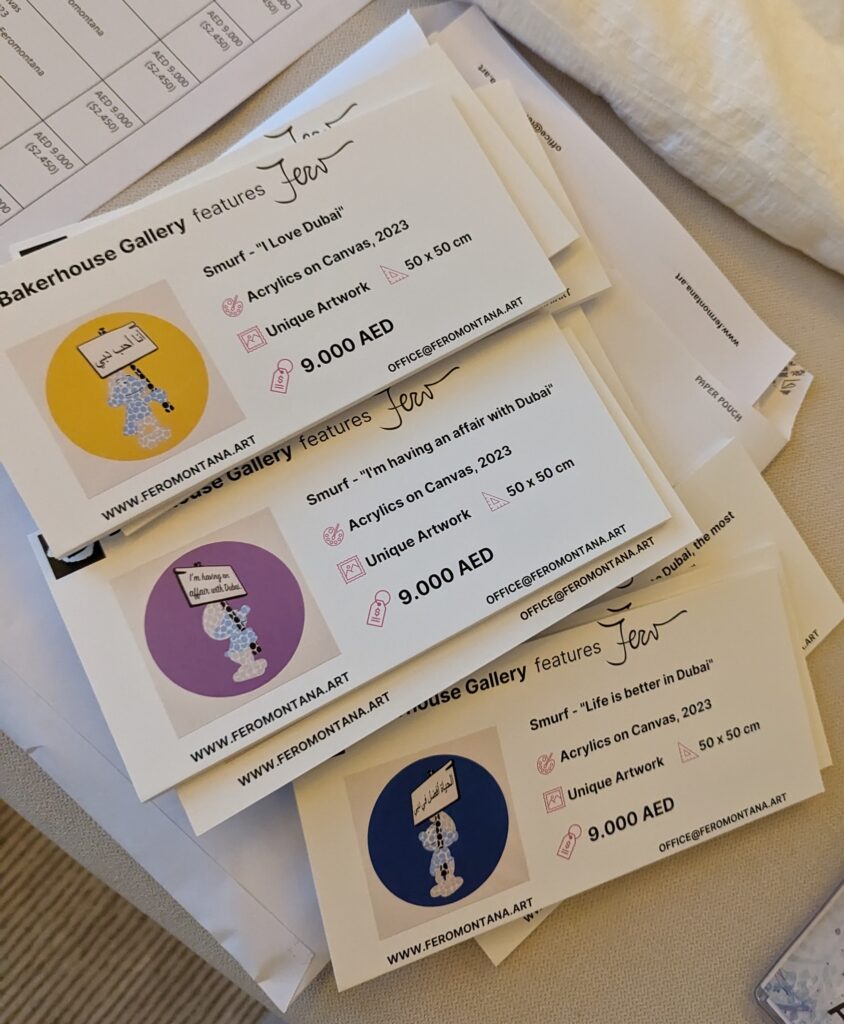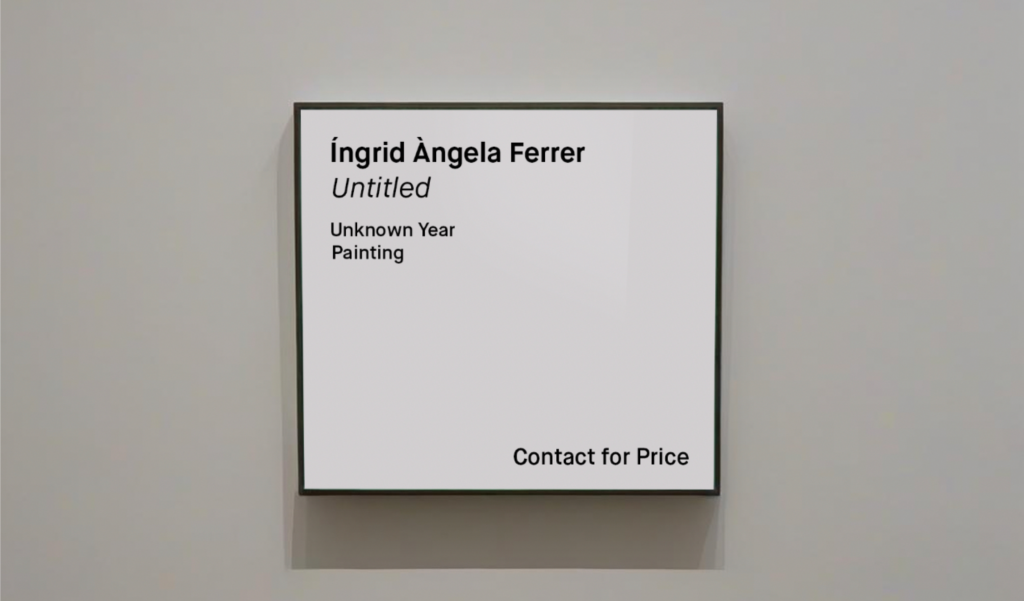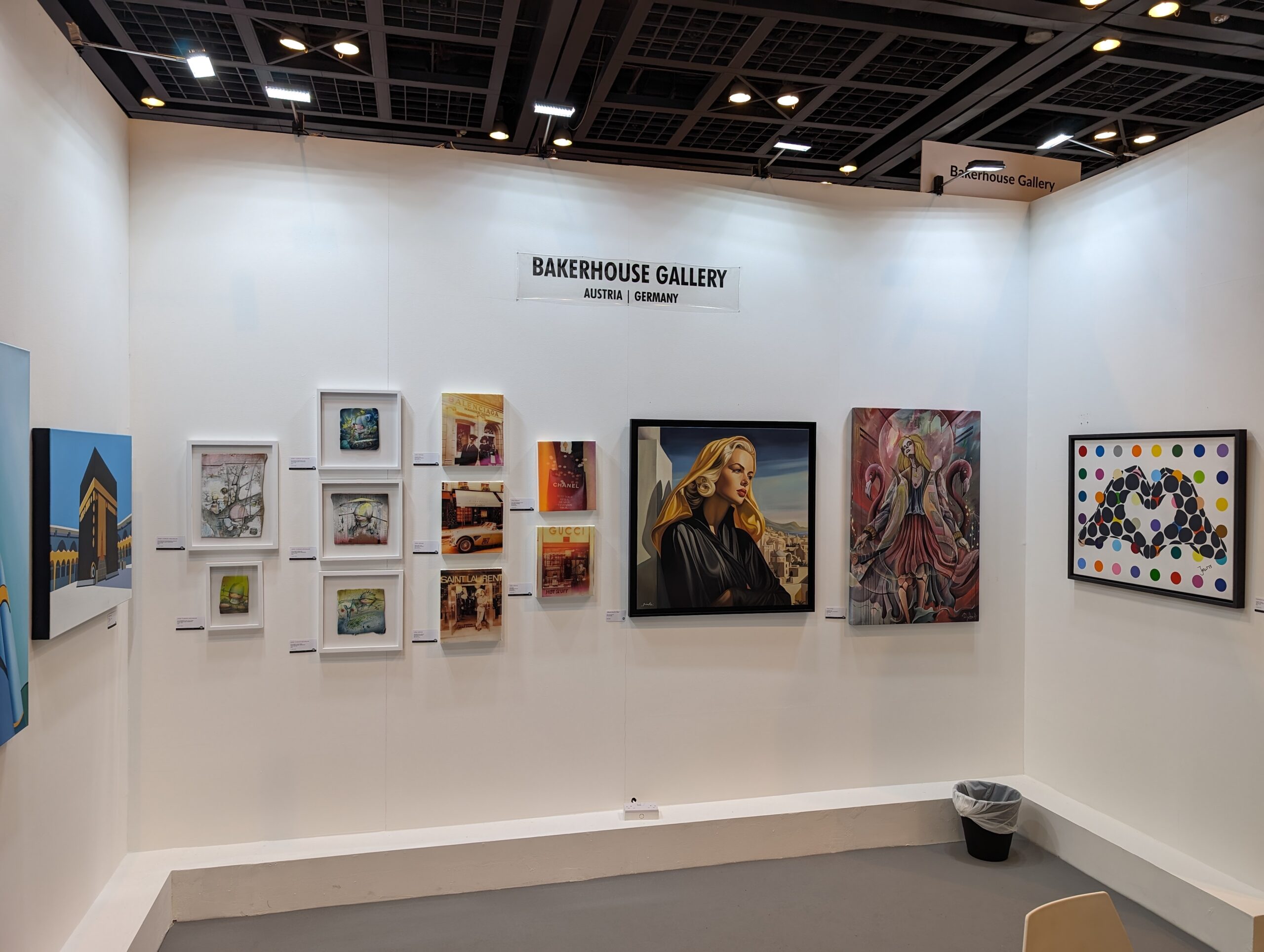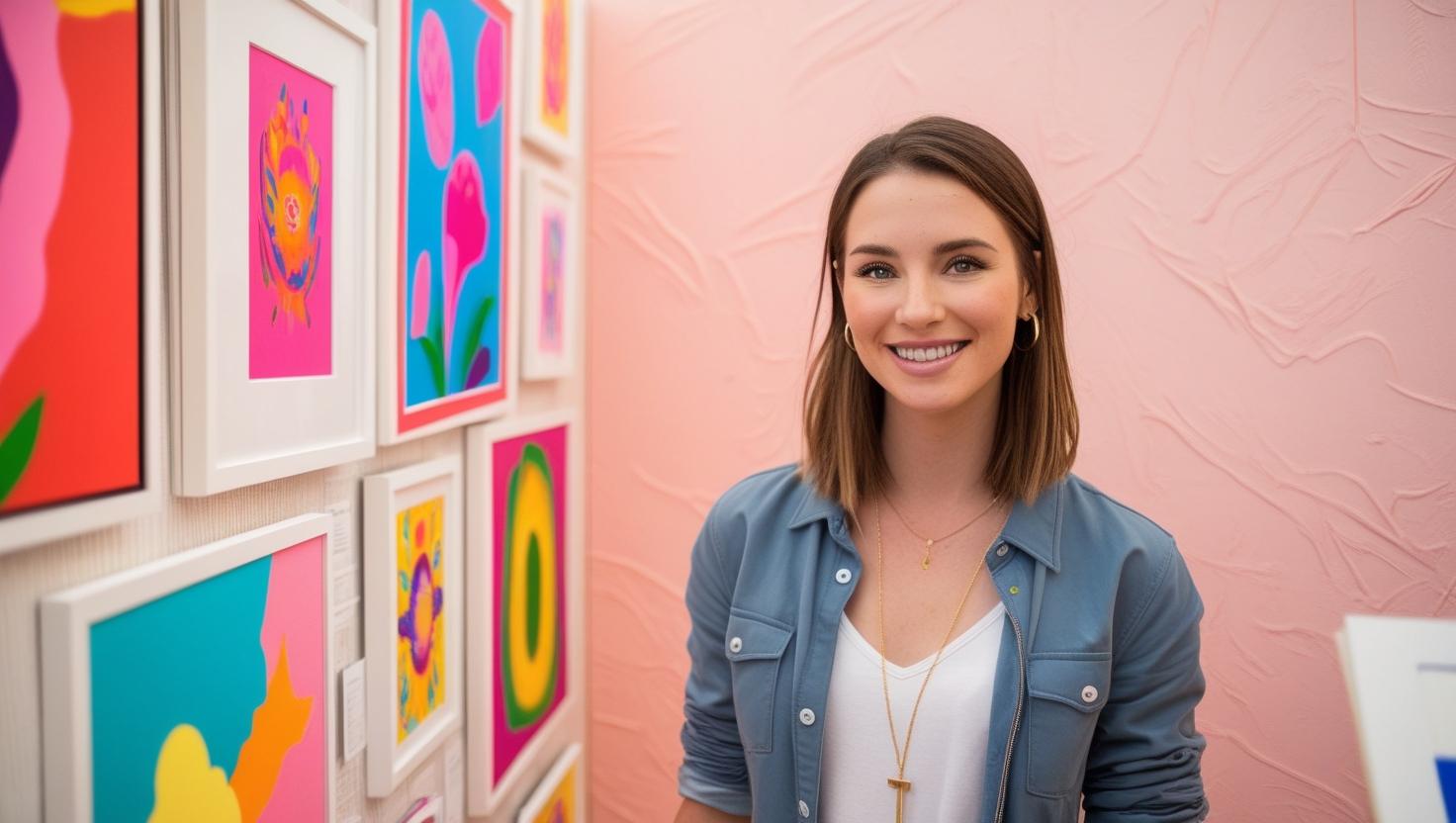When showcasing your art at exhibitions and fairs, properly labeling your artworks is crucial for informing and engaging viewers. Clearly labeling artworks and offering easy access to information has also proven to increase sales and visitor engagement. While there isn’t a universal standard for art labels, most include key elements to ensure clarity and professionalism. This guide will walk you through the essential components of artwork labels, how to create them, and where to place them for maximum impact.
Essential Components of Artwork Labels
1. The Artist’s Name
The artist’s name is the primary identifier on the label. For living artists, include the birth year (e.g., The Art Fair Guy, b. 1993). For deceased artists, include both birth and death years (e.g., Frida Kahlo, 1907–1954).
2. The Title of the Work
The title can be formatted in plain text, italics, or bold. Italics are commonly used to differentiate the title from other information and adhere to English grammar rules for titles (e.g., The Greatest Artwork in the World)
3. The Date the Artwork Was Made
Include the year of completion. If the artwork spans multiple years, indicate the range (e.g., 2022-2024). For historical works with an uncertain date, use “circa” or “unknown” (e.g., c. 1919).
4. The Size of the Artwork
List dimensions in height x width x depth format, if applicable (e.g., 70 x 50 x 3 cm). For works with variable dimensions, indicate this (e.g., dimensions variable).
5. The Medium of the Artwork
Detail the materials used. This can be as simple (e.g., oil on canvas) or detailed (e.g., gel medium, tea, sand, dirt, grass on found canvas) as necessary.
6. The Price or Credit Listing
If the artwork is for sale, include the price at the bottom of the label. For loaned works, credit the lender (e.g., Courtesy of The Art Fair Guy).
7. Contact Information
This one is often completely neglected on price tags and underestimated by artists and galleries. Often visitors take pictures of artworks and price tags and look at them at home after their exhbition visit. Obviously you want visitors to easily be able to reach out to you and contact you. Thats only possible if you add en email or website URL to your artwork labels.
Additional Information for Artwork Labels
Museums and large galleries may include cataloging numbers or donor credits. This information adds provenance and context, especially for works of historical significance.
Examples of great Artwork Labels

How not to label your Artwork
Below you can find an example of how not to label your artworks. There is no relevant information on this price tag except for the artist name. The rest is either information you can see already (Painting) or you have to ask for (Unknown, Contact for Price…). There is no point in adding price tags like this since this will only frustrate vistors who simply want information.

Options for Labeling Artworks in Exhibitions
scan.art
scan.art can replace traditional artwork price tags at exhibitions by utilizing advanced image recognition and object detection technology. Visitors simply use their smartphones to scan the artwork, instantly receiving detailed, contactless information without needing to download an app or register. This modern approach enhances the visitor experience by providing comprehensive details about the artwork, artist, and pricing directly to their device. The benefits include a seamless, interactive engagement, reduced clutter in exhibition spaces, and the elimination of physical touchpoints, aligning with hygiene protocols in public spaces.
Custom Vinyl Lettering
Many galleries (recently also more and more artists) use custom-cut vinyl for artist names and titles near entryways and next to artworks. Vinyl lettering is removable, wall-safe, and available in various sizes and colors. Consult with vinyl cutting professionals for options.
Creating a Map for Artwork Info
A gallery map or exhibition booth map allows you to keep walls clear of labels. Number your works on a floor plan and provide a corresponding list of details. This method is clean and minimizes wall clutter.
Making Adhesive Labels
For a cost-effective solution, use traditional printer labels. Affix labels to mat board or foam core for a polished look, cutting edges flush with the mount. Avoid sticking labels directly to uneven walls to maintain professionalism. When labeling each artwork with adhesive labels, make sure to place labels on the same side and height of each artwork to avoid a messy look.
Best Practices for Label Placement
- Next to the Artwork: Place labels to the right or below the artwork, ensuring they are easily visible without overwhelming the piece. Make sure to place labels on the same height and same position for all artworks to avoid cluttering and messy walls.
- At Eye Level: Position labels at a comfortable viewing height, typically around 150cm from the floor.
- Consistent Spacing: Maintain uniform spacing between artworks and labels for a cohesive presentation.
Conclusion
Properly labeling your artworks enhances the viewer’s experience, ensures your work is presented professionally but also leads to increased sales due to easy access to information for visitors. By including essential details and considering various labeling methods, you can create effective and aesthetically pleasing labels for your exhibitions and fairs. Whether using digital tools like scan.art, vinyl lettering, adhesive labels, or gallery maps, ensure your labels are clear, informative, and enhance the overall presentation of your art.
Check out our other Articles for Artists:









